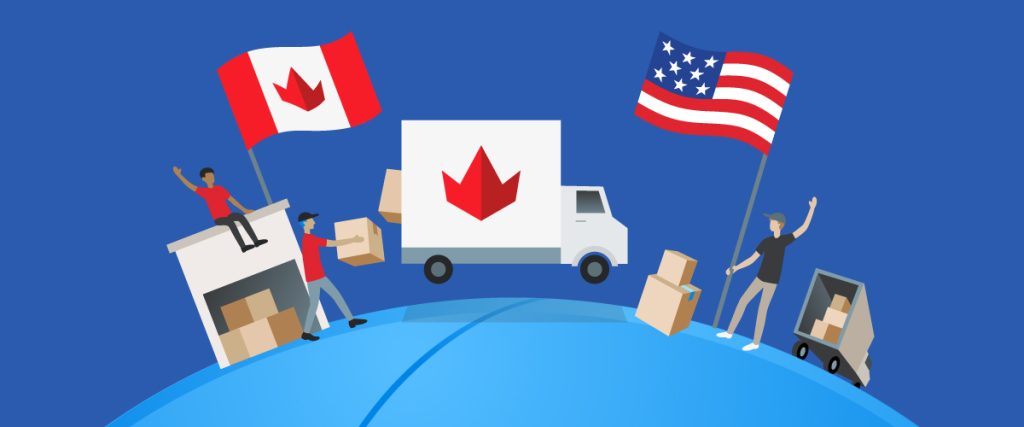As a fractional CFO serving multiple e-commerce businesses, I’ve been closely monitoring the evolving tariff situation between Canada and the United States. The recent implementation of Trump’s tariffs has created a complex landscape that’s impacting cross-border trade in significant ways. Here’s what Canadian e-commerce operators need to understand about these changes and how to adapt their strategies accordingly for this month.
The Current Tariff Landscape
Since President Trump signed executive orders in February 2025 imposing 25% tariffs on Canadian imports, the e-commerce world has been scrambling to adjust. As of May 2025, we’re seeing a mixed picture with some important exemptions and restrictions.
The good news for qualifying businesses is that goods that meet Canada-United States-Mexico Agreement (CUSMA) requirements have received significant exemptions. Auto parts traded under CUSMA rules, for example, are exempt from the 25% tariffs that began on May 3rd. This exemption aligns with language in Trump’s April executive order indicating CUSMA-compliant parts would not face the additional tariffs.
However, products not qualifying under CUSMA continue to face substantial barriers:
- Non-qualifying goods remain subject to the 25% IEEPA tariffs
- Non-USMCA-originating steel and aluminum products now face up to 50% tariffs when entering the United States
Impact on E-commerce Operations
The changing tariff situation has forced many e-commerce businesses to make difficult decisions. Some retailers have completely halted sales to US customers amid the uncertainty. For instance, Space NK, a British beauty products retailer, paused e-commerce orders and shipping to the United States “to avoid incorrect or additional costs being applied to our customers’ orders.”
Similarly, Vancouver-based company Understance, which sells underwear manufactured in China, informed customers it would no longer ship to the United States due to the tariffs.
The De Minimis Game-Changer
Perhaps the most significant change for e-commerce businesses is the removal of the “de minimis” exemption. The US has ended duty-free treatment of e-commerce packages worth less than $800 for products originating from China and Hong Kong as of May 3, 2025.
This change has exposed those goods to tariffs of up to 145% on Chinese goods following Trump’s decision in April. For goods handled by the US Postal Service, the tariff will be 120% of their value, or $100 per package, with the amount set to increase to $200 in June.
As a fractional CFO services provider, I’ve been advising clients that this change fundamentally alters the economics of cross-border e-commerce for many product categories.
Canadian Government Response
The Canadian government has implemented several measures to support businesses affected by the tariff situation:
- Canada has imposed 25% retaliatory tariffs on $29.8 billion in goods imported from the US
- A performance-based remission framework for automakers has been announced to incentivize continued production and investment in Canada
- Temporary 6-month relief has been provided for goods imported from the US that are used in Canadian manufacturing and processing
Strategic Adjustments for E-commerce Businesses
As a fractional CFO working with multiple e-commerce clients, I recommend several strategic adjustments:
1. Reassess your supply chain
Consider whether your products qualify under CUSMA and if not, whether adjustments to sourcing or manufacturing could help them qualify.
2. Update your shipping and logistics
Cross-border shipping services are adapting to the new reality. Prepare to provide more detailed information including Harmonized Tariff Schedule (HTS) codes and Country of Origin (COO) information for all shipments.
3. Pricing strategy review
E-commerce businesses need to carefully evaluate whether to absorb tariff costs or pass them on to customers. This decision should be based on competitive analysis and margin considerations.
4. Market diversification
Some of my e-commerce clients are accelerating plans to diversify into markets beyond the US, including domestic expansion and exploring opportunities in Europe and Asia.
Looking Ahead
The e-commerce landscape between Canada and the US remains uncertain as May 2025 progresses. While the exemption for CUSMA-compliant goods provides some relief, many businesses are seeking temporary workarounds in hopes that tariff rates may be reduced.
Unfortunately, some companies have completely exited the market due to the tariff situation. As one trade consultant noted, “I’ve seen a lot of small to medium-sized businesses just choose to exit the market altogether.”
As a fractional CFO services provider, I’m helping clients develop contingency plans for various scenarios while maintaining flexibility to adapt as the situation evolves. The businesses that will thrive in this environment are those that can quickly adjust their strategies while maintaining a clear understanding of their financial position.
For e-commerce entrepreneurs navigating these challenging waters, having experienced financial guidance is more valuable than ever. A fractional CFO can provide the strategic financial insight needed to weather this period of trade uncertainty and position your business for long-term success.
Ready to level up your financial visibility?
Whether you’re an eCommerce business scaling rapidly or a CPG leader planning your next big move, book your free consultation today to gain a competitive edge! Let’s create a financial roadmap tailored to your growth goals.
Check Out Our Related Articles:
- Trump’s Tariff Pause: The Top 3 Strategic Recommendations for Ecommerce and CPG Businesses – The temporary pause on U.S. tariffs offers a critical window for e-commerce and CPG companies to optimize their supply chains, reevaluate pricing, and strengthen financial resilience. Fractional
- How Canadian E-commerce Businesses Are Adapting to US Tariffs: Strategic Shifts From a Fractional CFO – Canadian e-commerce companies are responding to rising U.S. tariffs by diversifying their supply chains, relocating warehousing, and focusing more on domestic and non-U.S. international markets.
- Mastering Multi-Location Financial Management for E-commerce Success in 2025 – To grow sustainably, you need predictable cash flow—especially in today’s volatile market. This guide walks you through strategies like dynamic forecasting, contribution margin analysis, and smart inventory planning to help you stay in control

